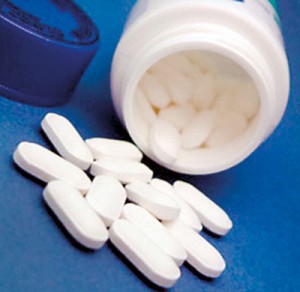Sunday Times 2
Is ibuprofen stunting the growth of crops?
View(s):Every day painkillers and anti-inflammatory drugs such as ibuprofen that are flushed out into the environment are stunting the growth of important food crops, new research suggests.
Scientists have assessed the impact of a range of commonly used non-steroidal anti-inflammatory medication on edible crops like lettuce and radish.

Some of the drugs caused radishes to grow shorter roots, which may impact on the size and quality of the food
They found that the drugs could change the way the roots and stems of the plants grow in the first few weeks after germinating.
In some cases the drugs suppressed growth and led to roots being shorter while others enhanced the growth of leaves. They could also alter the way the crops took up water.
More than 30 million of these drugs are prescribed across the world every day and find their way into the environment.
Dr Clare Redshaw, who led the study at the European centre for environmental and human health at the University of Exeter, said that the findings raised serious questions about how the medication we use is altering the environment around us.
Environmental researchers have in the past warned that hormones like estrogen from contraceptive drugs are having a devastating impact on fish and amphibian.

Non-steroidal anti-inflammatories like ibuprofen can escape into the environment through waste water and when old unused drugs are are thrown away in to landfill, which could be having a major impact on plants
Now the latest work suggests that many other common drugs are also having unexpected impacts on the environment and the food we eat. Dr Redshaw said: ‘These are some of the most widely used drugs in the world, yet we know very little about their effects on flora and fauna. ‘The roots and stems seemed to be the most affected in the plants we looked at, but some of the drugs had opposing effects in different plants.’
For example, diclofenac, a non-steroidal anti-inflammatory drug used to treat arthritis and migraine headaches, seemed to suppress the growth of radishes while enhanced lettuce growth. By comparison, Ibuprofen exposure delayed the opening of lettuce leaves and had a significant influence on early root development in lettuce but enhanced the growth of radish roots. ‘We only ran these experiments for a number of weeks but if we continued for several months we may see the affects change,’ said Dr Redshaw.
‘Early development is a crucial time for plants and it is likely we would see continuing impacts in these plants. ‘Clearly it is not catastrophic, otherwise all out fields would be empty, but it is clear these drugs are changing the way plants grow.’
Dr Redshaw and her colleague Dr Wiebke Schmidt studied how six different non-steroidal anti-inflammatory drugs changed the germination and
growth of lettuce and radish plants.
They looked at ibuprofen, diclofenac, naproxen, tolfenamic acid, meclofenamic acid and mefenamic acid – which are all used to treat arthritis, migraines or menstrual pains.
They found that each of the drugs altered the way the plants photosynthesised, their overall size, their root and shoot length and how they took up water. The findings, which are published in the Journal of Ecotoxicology and Environmental Safety, emphasis the need to find new ways to remove medication from waste water.
Dr Redshaw said although they only studied the impact of the drugs in two plants, it was clear they could also affect other crops.
© Daily Mail, London

